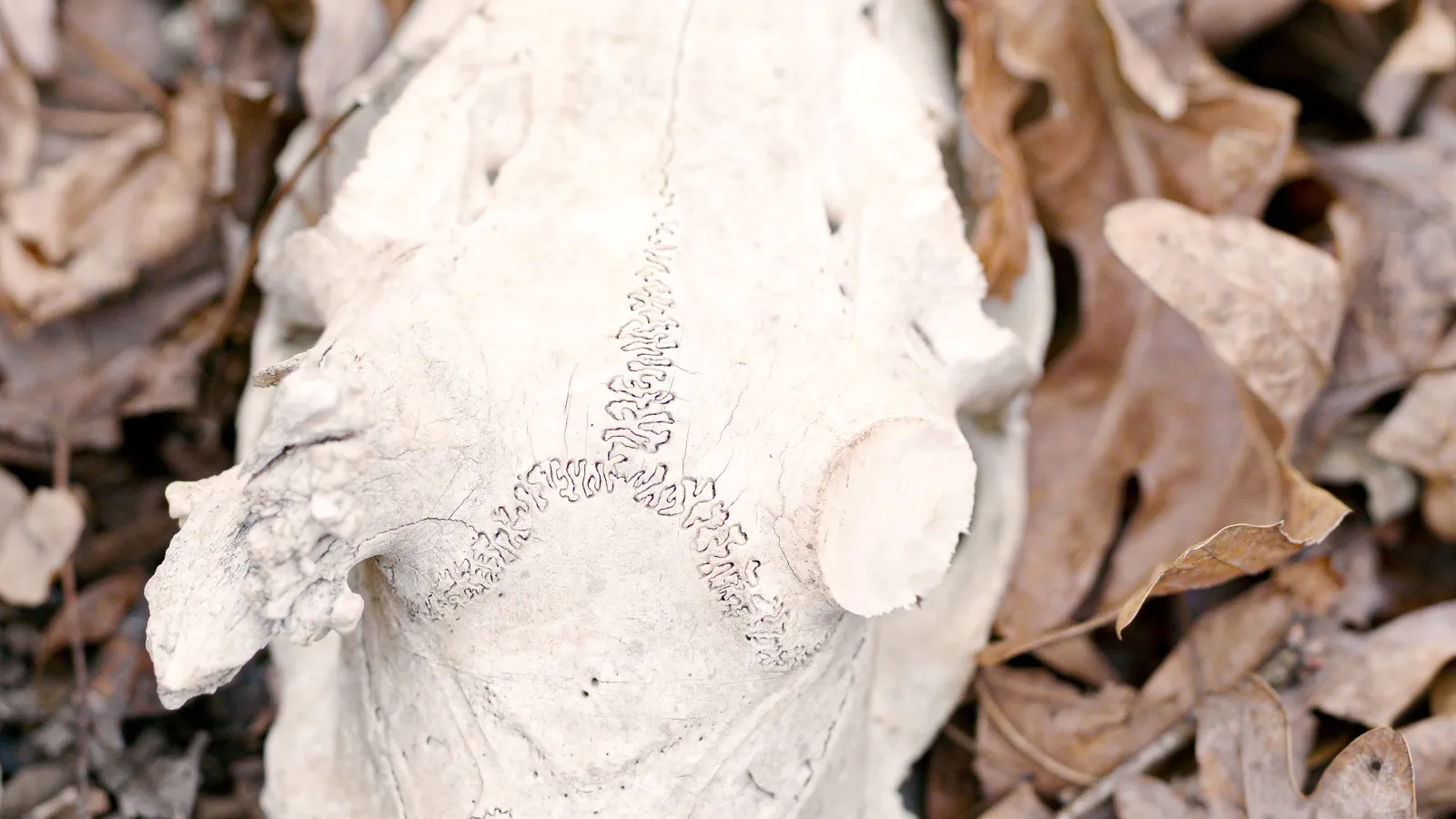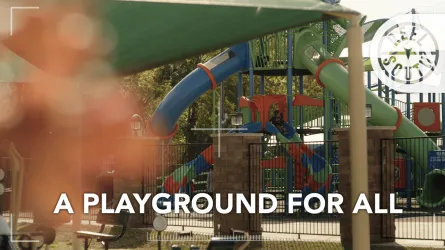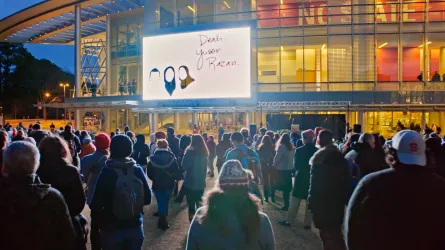Iranian-Arkansan filmmaker Andy Sarjahani discusses the PBS premiere of his short film, To the Bone, which visualizes the poetry and Johnny Carrol Sain in a haunting Southern Gothic naturalist hike through the Ozarks. The interview has been edited and condensed for clarity.
Nick Price: When did you first have the idea to make this film and how did you first learn about Johnny Carrol Sain, the poet we hear and see on screen?
Andy Sarjahani: I had the idea almost immediately after reading Johnny's essay of the same title. I went for a walk with my dog on the levee in New Orleans and was thinking about Johnny's words and mapping out how it could be translated visually. I gave Johnny a call and proposed the idea to him, and he was immediately down to collaborate. It was the height of pre-vax Covid, and while being couped up at my home in New Orleans, I was eager to get back to the woods in my native Ozarks and just make something for the sake of making. I made this piece in two days as an excuse to get into the woods and stay moving. I had no idea it would turn into a film on the festival circuit.
I knew Johnny from my first documentary years ago, DOWNSTREAM PEOPLE. That film has more of a journalistic approach and focuses on environmental justice issues in the Buffalo River watershed. Johnny was actually a participant that was interviewed in that film and we have maintained contact ever since that's become a friendship. It was really cool to be able to collaborate with him and I hope it's not the last time.
NP: One of my favorite parts of filmmaking is when artists of different media can join forces and create wholly new art forms and meanings. Can you talk about your approach to giving imagery to the Sain poem?
AS: This is an essay film and I approached it almost like a music video. It was important to me to show images in the Ozark landscape that spoke to the cycle of life that Johnny so eloquently wrote about. Given that we were in the thick of winter, death was more visually prevalent. I did not want to show the harvest of an animal for this work - it felt gratuitous and unnecessary. Beyond that, I roamed the woods and creeks in the Ozarks with my dog June, looking for visual cues that elevated Johnny's words.
NP: Are there any other artists or writers that inspire you to make more work?
AS: Tons! Currently, I study a lot of the work of Craig and Brent Renaud as I'm developing a feature vérité documentary. My livelihood is also documentary cinematography, which is primarily vérité filmmaking – my favorite kind. Wendell Berry and Abbas Kiarostami are all-time go-to's as well. I also love Thelma and Louise. Few people know that it starts out in Arkansas.
NP: You spent a lot of your life out in the woods. What has nature taught you as a filmmaker?
AS: Everything is temporary and we are insignificant in the big picture, yet the present and immediate are both beautiful and merciless.
NP: Part of your professional journey is moving on from academia and into filmmaking. Can you tell us how that came about?
AS: I read an article about a dairy farmer in Upstate New York that shot all 51 of his dairy cows in the head and then committed suicide under the weight of the dairy industry. I felt that a peer-reviewed journal article on dairy prices and dairy policy couldn't affect change like that man's story, so I began the long road of transition.
NP: Tell me about that transition.
AS: It was a long road. After nine years of higher education and and multiple degrees, living off of student stipends and grants, I opted to not go to journalism or film school. I needed a way to pay the bills, keep low overhead, and learn/excel at an entirely new profession that I had zero experience in, that isn't exactly known for being a wealth generator. I knew that some musician friends from my hometown in Arkansas had worked seasonal nuclear plant outages around the US in the spring and fall and then lived and recorded in Nashville the rest of the year as they were trying to make it as professional musicians. I found out how to get my foot in at the nuclear plant and became a seasonal power plant mechanic. For several years, I worked 75 hour weeks - 10 weeks in the spring and 10 weeks in the fall - wrenching in nuclear plants and living in seasonal man-camps in motels in various small towns around the US. This was a completely different world than academia. During my off-time I would work on my own projects, work on other projects for free, build my network, and study/practice as much as possible until I eventually became a full time professional (documentary cinematography is my primary source of income).
Not long after I started wrenching in power plants, I moved to Austin and made it my home-base, because I knew it had a solid film community and had access to decent climbing which was important to me for mental health. I lived with roommates in a tiny rundown spot in South Austin. I didn't have health insurance for 8 years. I dumpster dove from the nicer grocery stores around town so. All of these strategies gave me the low overhead, free time, and financial flexibility I needed to buy equipment and self-fund my early projects. I also started interning for free on feature documentaries which I wouldn't have been able to do, if not for the seasonal work. My first big opportunity was working with Keith Maitland in 2015 on his two feature docs, TOWER and A Song for You: The Austin City Limits Story. It was a small crew and I made myself available for any and all work and Keith was generous with his time and knowledge outside of work. Since then, Keith has been an incredible friend and mentor and we continue to work together as collaborators today. My work still has a long ways to go, but those early days when you know your work really isn't quality and yet you're making all these sacrifices and you just keep waiting for the page to turn? Those days are a serious test of how much you really want it. I suppose that eight year stretch taught me that I was committed to being a documentarian, or I'd die trying.
NP: What advice do you have to give to people like you, who looking to make a career evolution?
AS: Trust the process. Trust yourself. Make work that is honest to who you are. Be honest with yourself. Surround yourself with good people. Be smart with your finances, especially for those of us in this biz that don't come from wealthy families. Those are all cliches, but I suppose that cliches exist for a reason. There is a lot of practical, nuanced advice as well that I'm happy to offer to individuals in this specific space.
NP: You received funding from ITVS and SDF more recently. Is there anything you can tell us about Untitled Iranian Hillbilly Project?
AS: It's a personal film about growing up in Arkansas as the son of a Muslim Iranian immigrant father and Southern Baptist from Alabama mother. Bridging gaps in polarized times, building understanding and having hard conversations, and owning your identity when there is no check in the box for it. I'm excited to continue with production on the film.
NP: Lastly—as a practical tip, what is one item you never go on a shoot without?
AS: Leatherman multi-tool!
Category
Share


